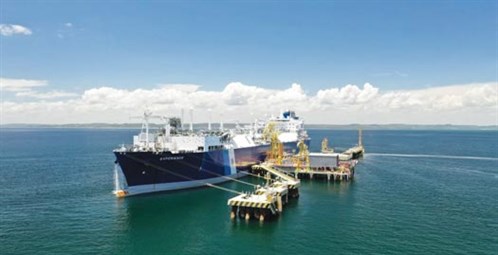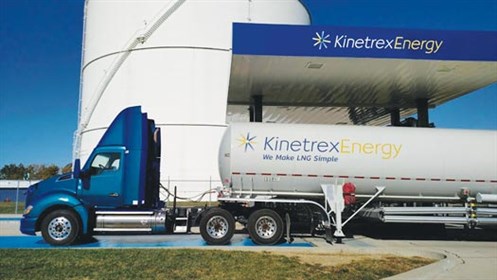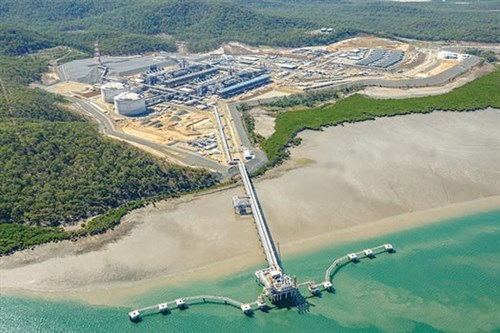Gas Processing News
Excelerate collaborates with Petrobras on Bahia regas lease
 |
Excelerate Energy LP concluded with Petróleo Brasileiro SA (Petrobras) the negotiation stage of the tender process for the lease of the Bahia regasification terminal. Once the financial and legal qualification and certification stages have been concluded and all regulatory approvals have been obtained, Excelerate will start importing LNG and selling regasified natural gas to its Brazilian customers. Excelerate will deploy one of its existing FSRUs for service at the Bahia regasification terminal.
Excelerate has provided regasification services in Brazil since 2012, with a track record of operational excellence at Petrobras’ LNG terminals in Bahia, Guanabara Bay and Pecém. In September 2020, Excelerate’s FSRU Experience broke an industry record for sendout capacity by reaching 1.06 Bft3 at the Guanabara Bay LNG regasification terminal. Excelerate operates 13 LNG terminals worldwide.
Australia faces “precarious” gas supply in 2022
Australia’s southern states could face a gas shortfall in 2022 unless LNG exporters offer more gas into the domestic market, according to the Australian Competition and Consumer Commission (ACCC).
The report paints a more dire picture than the Australian Energy Market Operator (AEMO) gave in March 2021, when it said plans by billionaire Andrew Forrest to have an LNG import terminal ready by 2022 would stave off any gas shortfall until 2026.
The ACCC said in August that proposed LNG import terminals would not be ready until 2023 at the earliest. “The precarious supply situation for next year highlights the importance of the new Heads of Agreement that the Australian government signed with LNG exporters in January 2021,” ACCC Chair Rod Sims said in a statement.
Earlier this year, Australia’s three east coast LNG exporters—Australia Pacific LNG, Queensland Curtis LNG and Gladstone LNG—agreed with the federal government to offer uncontracted gas to the local market before it is exported. Gas demand is expected to outstrip supply from production and storage by 6 petajoules in 2022, and the gap could be even larger if demand from gas-fired power plants is higher than forecast, the ACCC said.
The ACCC began its six-month reviews of the gas market in 2017 after gas prices jumped sharply following the startup of LNG exports from the east coast. Gas prices fell last year from around $6 GJ–$11/GJ at the beginning of the year to around $6 GJ–$8/GJ in the second half amid a coronavirus-driven demand slump, but the watchdog said the tightening supply situation could drive prices higher again.
Kinder Morgan closes acquisition of Kinetrex
 |
Kinder Morgan Inc. closed on its previously announced acquisition of Kinetrex Energy in August. The $310-MM acquisition includes two small-scale LNG production and fueling facilities in the U.S., a 50% interest in a landfill-based renewable natural gas (RNG) facility in Indiana, and signed commercial agreements for three additional RNG facilities with construction to begin shortly
Kinetrex is the leading supplier of LNG in the Midwest and a rapidly growing player in producing and supplying RNG under long-term contracts to transportation service providers. The company will continue operations as Kinetrex Energy, a Kinder Morgan company.
India’s new LNG plant to boost import capacity by 12%
India will boost LNG imports from 2022 as private firm Swan Energy starts its floating terminal, raising the country’s capacity to import LNG by 12% to 47.5 MMtpy.
New demand for LNG by India is expected to support Asian gas prices, which rose to record highs earlier in 2021, partly aided by the transition from coal or oil to gas in developing countries. The 5-MMtpy Swan FSRU, located at Jafrabad in western Gujarat state, will be commissioned in April 2022.
The FSRU was initially expected to be commissioned in 1Q 2021, but the pandemic and two cyclones have delayed the construction of a breakwater needed to make it an all-weather facility. Swan is setting up a jetty and will build more tanks to eventually double the LNG import capacity. Ghana’s Tema LNG is now using the FSRU for storing LNG.
India, the world’s fourth-largest LNG importer, wants to raise the share of natural gas in its energy mix to 15% by 2030, from the present 6.2%, to cut emissions. State-run gas importers Indian Oil Corp. and Bharat Petroleum Corp., and exploration firm Oil and Natural Gas Corp., have leased 1 MMtpy capacity each at Swan’s terminal.
Swan Energy owns 63% of Swan LNG, while two entities of Gujarat state government together have a 26% share. Mitsui holds 11% and is also the technical partner on the project.
Gevo to sell RNG to BP
Gevo’s wholly-owned, dairy manure-based renewable natural gas (RNG) project, located in northwest Iowa, has signed definitive agreements with BP Canada Energy Marketing Corp. and BP Products North America Inc. for the sale of Gevo’s RNG production.
The NW Iowa RNG project is being constructed, and is expected to commence production in early 2022. Upon project completion, NW Iowa RNG is estimated to produce approximately 355,000 MMBtu/yr of RNG. The RNG is expected to be sold into the California market under dispensing agreements BP has in place with Clean Energy Fuels Corp., the largest fueling infrastructure in the U.S. for RNG.
RNG-fueled vehicles are estimated to result in up to 95% lower emissions than those fueled by gasoline or diesel on a lifecycle basis, according to a U.S. Department of Energy study.
It is anticipated that NW Iowa RNG will benefit from environmental product revenues under California’s Low Carbon Fuel Standard program and the U.S. Environmental Protection Agency’s Renewable Identification Number program.
Petronas delivers its first carbon-neutral LNG cargo
 |
Malaysia’s Petronas has completed the delivery of its maiden carbon-neutral LNG cargo to Shikoku Electric. The cargo was delivered from the Petronas LNG Complex in Bintulu to the Sakaide LNG terminal in Shikoku Island, Japan.
The company added that it offset the estimated lifecycle carbon footprint of the LNG cargo through renewables-based carbon credits for the emissions generated from upstream gas exploration and production, transportation, liquefaction and shipping of the cargo.
Additionally, the carbon credits used by Petronas for the delivery were certified through a rigorous verification process under the verified carbon standard program, which is globally recognized and has been adopted by energy players and producers.
In the LNG industry, carbon-neutral LNG is seen as a catalyst to spur greater carbon commitments, with a growing number of LNG consumers seeking ways to reduce their carbon footprint. Petronas is also reducing its carbon footprint throughout its LNG and gas value chain. These carbon-reduction efforts, among others, include powering the PLC with 90 MW of hydroelectricity, conducting flare recovery as well as carbon capture and storage from offshore gas fields. GP




Comments